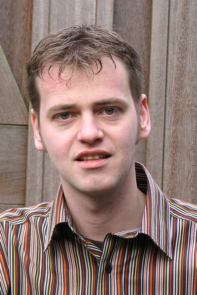Stripline-based microfluidic devices for high-resolution NMR spectroscopy
Promotion date: 24. September 2009
Promotor: Prof. Dr. Han Gardeniers
Assistant Promotor: Prof. Dr. Arno Kentgens and Dr. P.J.M. van Bentum
| A novel route towards microchip integrated Nuclear Magnetic Resonance (NMR) analysis was studied. A novel design which departs from circular shaped coils, was proposed. The basic element is a radiofrequency-stripline which can be defined in a single layer lithographic process and which is fully scalable to specific sample dimensions. Due to the non-complicated ‘coil’ geometry, the static field distortion is very low, resulting in a high resolution detection system. |
Why is a totally new design for NMR analysis such an interesting challenge?
NMR is a very popular technique in different fields, be it chemistry, material science or biology. This is mainly because of the direct molecular structure information it provides. The main weak point however, is the lack of sensitivity, especially when small samples are being measured. A lot of research effort has already been taken place.
We chose a radical new approach, because efforts to further minimize existing coils had only limited results. Minimizing the coil means it has to be placed closer to the sample, disturbing the static magnetic field in the sample.
A new design demands a new way of looking at the process as a whole, I suppose.
First of all we developed this new design of the entire NMR-detector, which comprises a stripline, solving the disturbing field theoretically. By use of careful calculations we demonstrated that the theoretical sensitivity of a stripline is higher than that of any thus far known coil-shape. Also a spectacular resolution seemed possible. This is mainly due to the fact that the coil can approach the sample, without disturbing the field.
Were the experimental results positive right away?
We worked closely together with the NMR-group of the Radboud University in Nijmegen. In their NMR-facilities we tested the stripline, and the first results were amazing. The sensitivity was very high indeed. The resolution of the first prototype was less convincing, at first. After that we fabricated the whole microchip in the Mesa+ cleanroom, and immediately we were, much to our surprise, close to the theoretical resolution limits already.
Here in Twente I really enjoyed the freedom, using the cleanroom facilities. A special effort was needed to tackle the process of waferbonding needed. Peter Linders and his colleagues approached this novel kind of process with a very open mind, allowing us to perform non-standard processes within the cleanroom facilities.
What kind of results did the thesis project bring already?
Two new PhD’s will continue the work, financed by NWO. There are still some complications left, but we know what to do. Companies like DSM, Schering & Plough (former Organon) are interested. Not only because measurement of smaller samples is possible. Also attractive are new possibilities to monitor synthetic reactions in-situ.
Furthermore we were very excited because the Journal of American Chemical Society (JACS) published our findings, like the Journal of Magnetic Resonance also. The waferbonding technology was published in Lab on a Chip.
What are your future plans?
I’m going to work as a post-doc in Nijmegen, for three years, trying to use the stripline geometry for micro-MRI analysis. After that I would like to apply to a big company, for example TNO, Philips or Shell. Right now it is difficult to find this kind of jobs. On the other hand, by moving to Nijmegen I have deliberately chosen for a new environment, to broaden my view.

